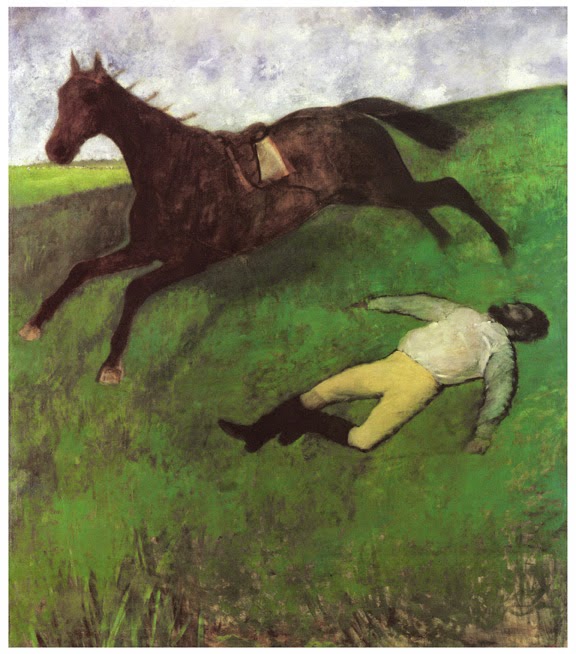Keeping a tradition, this was my "Z" from last year, this is JJ, a Zebra made of paper mache. He is here again to say good-bye and thank you to all of those who made the A-Z Challenge possible, both the editors, assistants and all you bloggers out there.
Ah, but there is a French connection. Since my theme was Edgar Degas, I needed something French. JJ was created in Haiti, and his white coat was made with pages from a French book, then the stripes were painted over the pages. Seeing the words in French made JJ special, I had to buy him and I did. He is hanging in my kitchen over the doorway to the dining room. And to further my penchant for naming inanimate objects, I looked up Haitian names online and saw, Jean-Jean or JJ.
The Internet is amazing--I learned so much about Edgar Degas but I have so much more to learn. And I learned about other topics from all the A-Z Bloggers as well. Now for the next few days I can leisurely read more blogs that I missed and read the familiar and new blogs I discovered. Merci to all of you!
Ah, but there is a French connection. Since my theme was Edgar Degas, I needed something French. JJ was created in Haiti, and his white coat was made with pages from a French book, then the stripes were painted over the pages. Seeing the words in French made JJ special, I had to buy him and I did. He is hanging in my kitchen over the doorway to the dining room. And to further my penchant for naming inanimate objects, I looked up Haitian names online and saw, Jean-Jean or JJ.
The Internet is amazing--I learned so much about Edgar Degas but I have so much more to learn. And I learned about other topics from all the A-Z Bloggers as well. Now for the next few days I can leisurely read more blogs that I missed and read the familiar and new blogs I discovered. Merci to all of you!
 |
| Jean-Jean. c. 2011, Haiti. Artist unknown. |
























